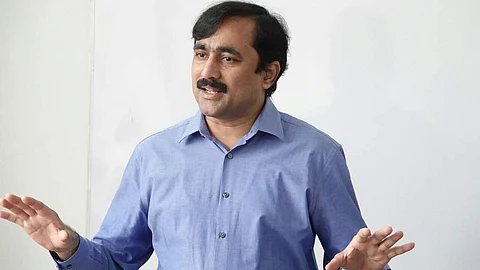

A hard taskmaster - that is what Dr A P J Abdul Kalam is to his former scientific advisor V Ponraj. Even today, this scientist clearly remembers the time he joined Dr Kalam's team as an enthusiastic 28-year-old. From 1995 to 2005, Ponraj worked with the former president in a number of projects including India's Vision 2020, energy independence Vision 2030 and the Provision of Urban Amenities to Rural Areas (PURA) mission.
Ahead of the missile man's fourth death anniversary, we catch up with this scientist, who had a lot to talk about his mentor. Excerpts from the conversation.
Can you tell us a little about your time working with Dr Kalam?
I worked with him for 20 years from 1995 to 2015. I joined his team when he was the Director-General of the Aeronautical Development Agency. Later, when he was the DRDO chief, I was a junior scientist. We worked together for various projects, where he would evaluate and mentor me. After this, I joined him for the India Vision 2020. After that, he became the President and then, he asked me to join him as Director Technology Interface at President's Secretariat. I also worked with him on the PURA mission, energy independence project and then the Pan African e-Network project. This was a 125 million dollar project, where 30,000 African students studied up to graduation. Also, through this, more than 50,000 Africans got telemedicine services. Also, did I tell you that I was the last PhD student under him? My thesis is almost done. I'll submit it soon.
Was it difficult working with the missile man? How was he as a boss?
He was a hard taskmaster. On an average day, I worked with him for at least 16 to 18 hours. He was really strict and would always want us to come up with feasible solutions, even if the problem seemed impossible to solve. He'd expect high-level solutions from us and make us complete tasks on time. Initially, it was very difficult, but in a few months, I got the hang of things.
When is the first thing that comes to your mind when you think of Kalam?
When Kalam addressed the energy independence mission 2030, he wanted to create a model solar power plant at the Rashtrapati Bhavan. He asked me to explore how much power the model would require. He was constantly looking for ways to bring it down. I formed an expert committee which evaluated the project, and later we came up with a 5 MW model. But unfortunately, we had to face a lot of bureaucratic problems here. Even though we were rushing, we could not see the project happening anytime soon. So finally, I decided to tell him what exactly was happening. I was tensed, but contrary to what I expected, Kalam sat me down and got me some coconut water and asked me to relax. He spoke to me and asked me to maintain a good relationship with the bureaucrats and advised me on how to get the work done. But unfortunately, we did not get permission for that project and soon his tenure as the President ended. But, had that tech been implemented things in our country would have improved a lot and we would have achieved energy independence long back.
Are we anywhere close to Kalam's Vision 2020?
To achieve the progress he envisioned in Vision 2020, the country's growth rate must be 10 per cent for 10 continuous years in agriculture, manufacturing, industry and energy sector. So far the country has never seen this. Maybe we've achieved 8-9 per cent growth for three years straight, but then it dipped later. India should not work on extractive policy based on tax collection but instead work on inclusive policies, governance and institutions. Instead of relying on tax collection, we must work on developing infrastructure. Only then we can succeed.
What are the major challenges here?
We have challenges in almost every sector. There can be solutions, but we need to allot enough funds towards that. Unless the government allows 3 per cent of the GDP towards Research and Development, we cannot bring about the sort of development envisioned by Kalam, and cannot become a knowledge superpower. Only 0.69 per cent of the GDP is alotted to research currently and in this scenario, there is no hope that the country will achieve it anytime soon. But at the same time, China took up these ideas pretty well. The result? They're a superpower today. But the various Indian governments, on the other hand, didn't bother to implement it well.
